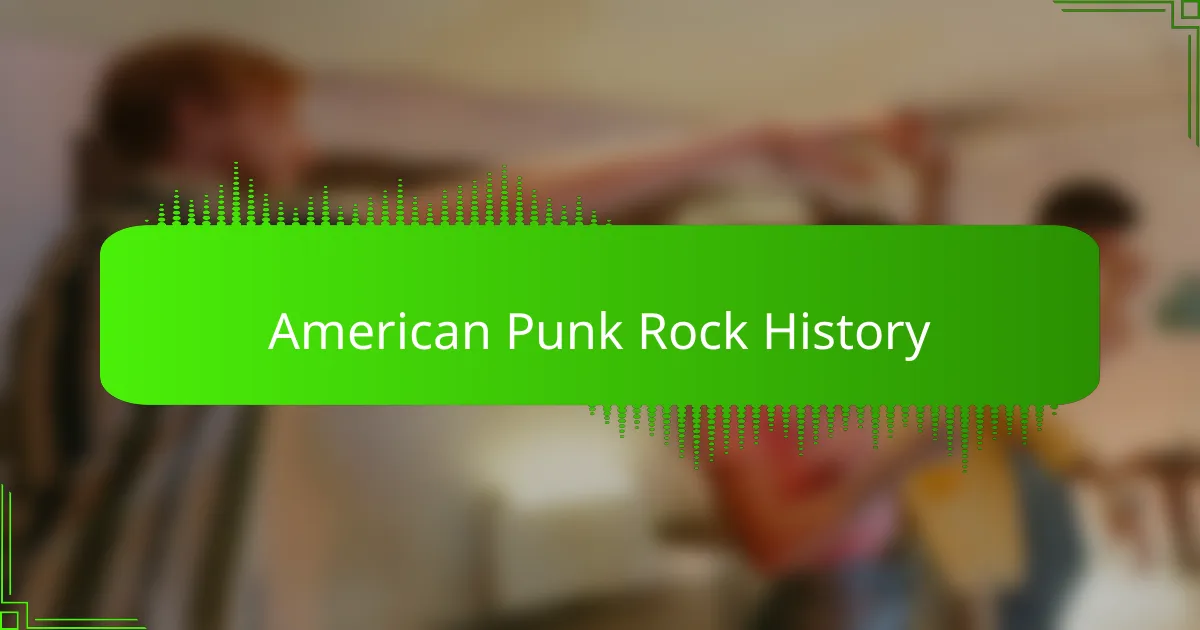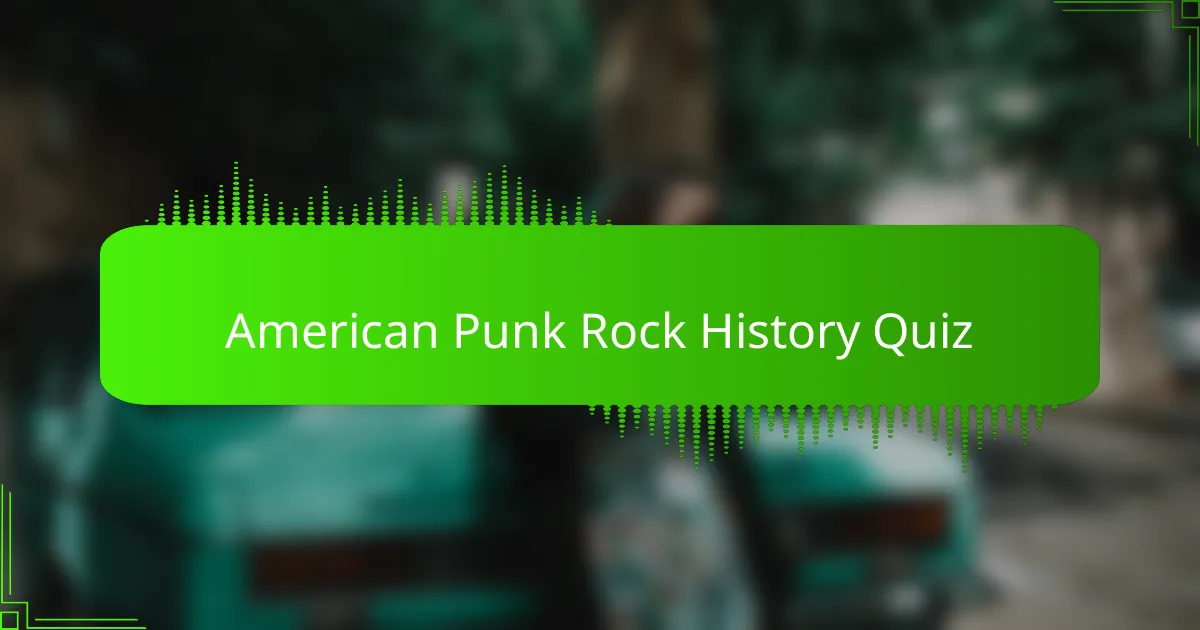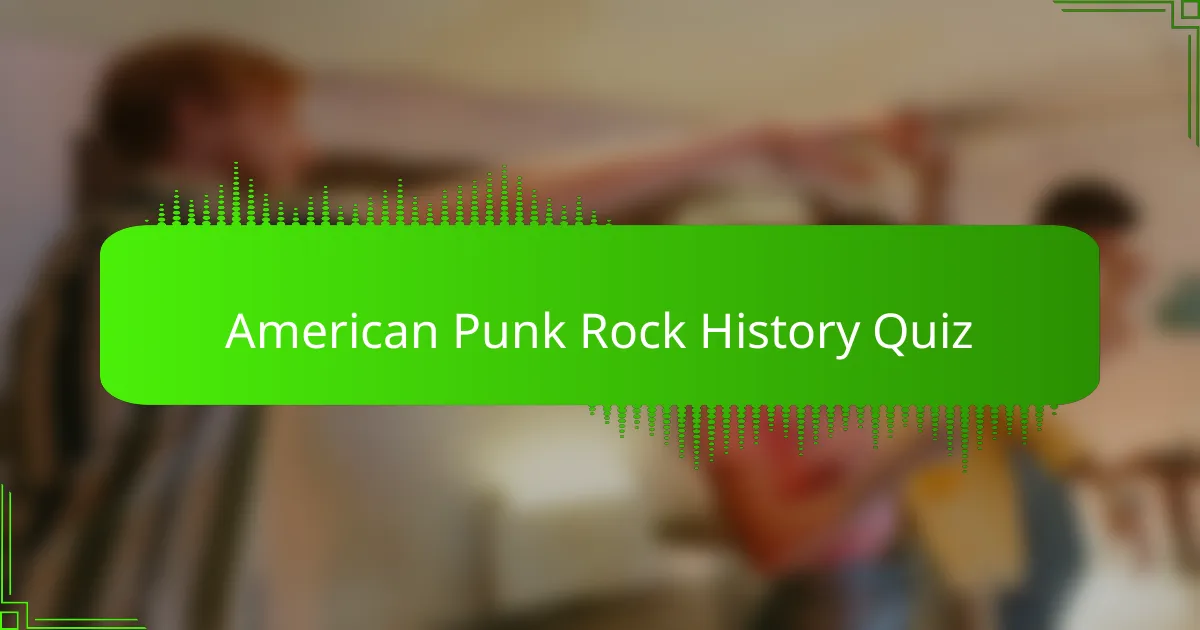
Congratulations! You’ve Completed the Quiz!
Thank you for participating in our quiz on American Punk Rock History! We hope you enjoyed testing your knowledge and learned something new along the way. Punk rock is more than a music genre; it’s a dynamic movement that sparked cultural change and inspired countless musicians and fans.
Through this quiz, you may have discovered the origins of punk, from its roots in the 1970s to its lasting impact on contemporary music. You might have delved into key bands, influential figures, and the significant events that shaped the punk scene. Understanding these elements is crucial to appreciating how punk rock challenged societal norms and how it continues to resonate today.
If you’re eager to learn more, we invite you to check out the next section on this page dedicated to American Punk Rock History. It’s packed with in-depth articles, band spotlights, and insights that will broaden your understanding of this exciting genre. We look forward to continuing this musical journey with you!

American Punk Rock History
The Birth of American Punk Rock in the 1970s
American punk rock originated in the mid-1970s, emerging as a response to the perceived excess and pretentiousness of mainstream rock music. Key bands like The Ramones, formed in 1974 in New York City, played a pivotal role in defining the punk aesthetic. Their simple, fast-paced songs emphasized raw energy over musical complexity. Similarly, the [censured] Pistols, though British, influenced American bands significantly during this period. The scene flourished in cities such as New York and Los Angeles, with venues like CBGB fostering this underground culture.
Several influential bands shaped the American punk rock scene throughout the late 1970s and early 1980s. The Dead Kennedys emerged from San Francisco, known for their provocative lyrics and energetic performances. Meanwhile, Bad Religion, formed in 1980, introduced a more melodic sound while tackling social issues in their lyrics. Other notable bands included Black Flag, which pioneered the DIY ethic, and The Misfits, recognized for their horror-themed aesthetic. Each band contributed to the diverse tapestry of American punk rock.
The Influence of Punk Rock on American Culture
Punk rock transcended music to influence fashion, art, and social movements in America. The punk style, characterized by leather jackets, ripped jeans, and distinctive hairstyles, became a symbol of rebellion. The 1980s saw punk rock raise awareness about issues like anti-authoritarianism and social justice. Bands like Minor Threat were vital in promoting the straight edge movement, advocating for a lifestyle free of drugs and alcohol. These cultural shifts reflected deeper societal changes, resonating with disaffected youth.
The Second Wave and Pop Punk Evolution in the 1990s
The 1990s marked a new era for American punk rock, often referred to as the second wave. Bands such as Green Day and The Offspring gained mainstream success, bringing punk into the pop arena. Green Day’s album ‘Dookie’ (1994) was pivotal in this transition, selling millions of copies. This era also saw the emergence of pop punk, dramatically shaping the sound and accessibility of punk music. While some traditionalists criticized these changes, the commercial success helped solidify punk rock’s place in popular culture.
The Legacy and Continued Relevance of American Punk Rock
The legacy of American punk rock continues to thrive into the 21st century. Influential festivals like Coachella and Warped Tour keep the punk spirit alive, showcasing established and emerging bands. Newer acts like Paramore and Fall Out Boy blend punk influences with modern pop elements, demonstrating the genre’s adaptability. Punk rock remains a powerful voice, addressing social issues such as inequality and climate change. Bands today draw inspiration from the original pioneers, ensuring that the spirit of punk rock endures.
What is American punk rock history?
American punk rock history refers to the development and evolution of the punk rock music genre in the United States, emerging in the mid-1970s. This movement was characterized by its fast tempos, strong beats, and often politically charged lyrics. Key bands such as The Ramones, [censured] Pistols, and Dead Kennedys played pivotal roles in shaping this genre. The venue CBGB in New York City became synonymous with punk rock, hosting countless influential bands and contributing significantly to punk culture. The genre further evolved through various subgenres and movements in the 1980s and 1990s, giving rise to bands like Green Day and The Offspring, which brought punk music into the mainstream.
How did punk rock influence American culture?
Punk rock significantly influenced American culture by challenging societal norms and establishing a DIY (do-it-yourself) ethos. It promoted individualism and rebellion against the establishment, reflected in its fashion and aesthetics, such as leather jackets and colorful hair. Punk rock’s anti-commercial stance inspired a new wave of independent music and publishing, fostering a sense of community among fans and musicians alike. The punk movement also intersected with other social movements, such as feminism and anti-racism, which can be seen in the work of bands like Bikini Kill and Bad Brains. The cultural impact of punk continues to resonate today in various artistic expressions and social movements.
Where did the punk rock movement begin in the United States?
The punk rock movement in the United States primarily began in New York City, with the iconic venue CBGB serving as its epicenter. This club, located on the Bowery, opened in 1973 and became a hub for punk bands during the genre’s formative years. Key performances by bands such as The Ramones, Television, and Blondie solidified the area as a focal point for the movement. While New York was central, cities like Los Angeles, with bands like X and The Germs, also developed vibrant punk scenes. These regions contributed to punk’s diverse sound and cultural impact.
When did punk rock reach its peak popularity in America?
Punk rock reached its peak popularity in America during the late 1970s to the early 1980s. The release of seminal albums such as The Ramones’ self-titled debut in 1976 and the [censured] Pistols’ “Never Mind the Bollocks” in 1977 helped to cement its status. The major media attention during this time highlighted punk culture, leading to a surge of interest in punk music. By the 1990s, bands like Green Day and The Offspring brought punk rock to a wider audience, achieving mainstream success with albums like “Dookie” (1994) and “Smash” (1998), further solidifying its impact on American music.
Who were the key figures in the American punk rock scene?
Key figures in the American punk rock scene include influential musicians and promoters. Johnny Ramone, DEVO’s Mark Mothersbaugh, and Henry Rollins of Black Flag were pivotal in shaping the sound and ethos of punk rock. Promoters and venue owners, like Hilly Kristal of CBGB, played crucial roles in providing platforms for emerging bands. Other notable figures include Patti Smith, who blended punk with poetic lyricism, and Iggy Pop, known as the “Godfather of Punk” for his stylistic innovations. These individuals not only defined the genre but also influenced future music movements.

